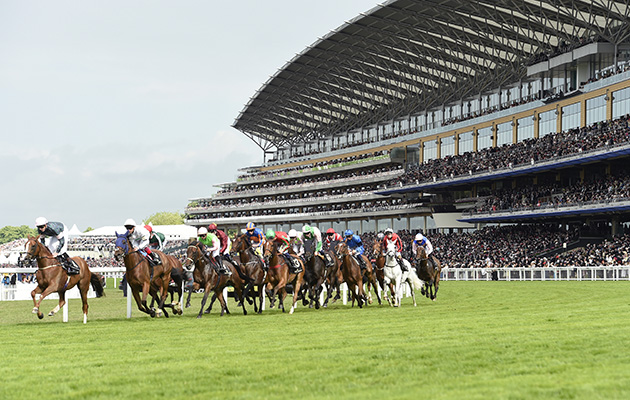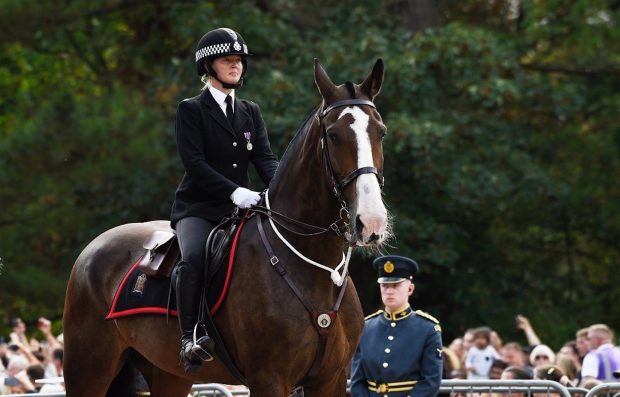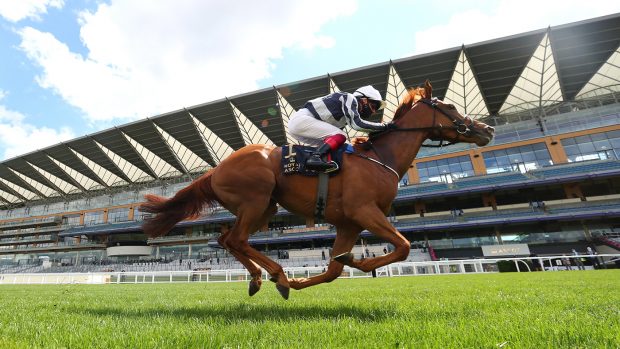This week’s Royal Ascot, which is set to take place from 16-20 June, marks another chapter in the racecourse’s history, due to the ongoing coronavirus pandemic. While it is desperately sad that the most colourful event in the racing calendar will be open to only a few, with racing happening behind closed doors, one day it’ll be the stuff of legend, very much like these previously lost or slightly different Royal Ascots…
The ‘black’ Royal Ascots
Queen Victoria died aged 81 on 22 January, 1901, bringing her then record 63-year reign to a close.
As the nation remained in mourning, Royal Ascot that year was held in a sombre mood with the Royal Stand closed and the racecard featuring a black border. Dressing in black was also the order of the day, although it was recorded in The Times that by the Thursday, when the Gold Cup was run, “a number of ladies who were in black on the first two days had assumed a more modified form of mourning, as there were many dresses of white, lavender and mauve, although not enough to impart any colour to the scene.”
The new Sovereign, King Edward VII, was also absent from the Royal Meeting in 1901, although this was on account of his own illness. His extreme discomfort turned out to be appendicitis and also resulted in his Coronation, scheduled for a fortnight after Royal Ascot, to be postponed.
King Edward VII, a great devotee of the turf, himself died on May 6, 1910 at the age of 68. Royal Ascot again saw an overwhelming dominance of black attire, with the Daily Mirror recording “Strange and striking were the contrasts at Ascot. The most splendid fete of the year usually had now its dominant note in mourning. No member of royalty was present, the King’s pavilion had drawn blinds and closed doors, and the occupants of the Royal Enclosure were in black, unrelieved save where ladies wore white flowers or had strings of pearls as the only ornament.”
The two World Wars
Royal Ascot was held as normal in 1914. However, it was just nine days after its conclusion on 28 June that Archduke Franz Ferdinand was assassinated in Sarajevo, setting in motion the First World War. Royal Ascot would not return until 1919. In the intervening years, the racecourse played host to a number of different functions including an army recruitment office, military hospital, medical supplies depot and a base for the Royal Flying Corps. A cinema for servicemen was opened on the Heath and made available to the public in the evenings.
Similarly, World War II resulted in Royal Ascot being suspended between 1940 and 1945, with the Grandstand providing accommodation for gunners of the Royal Artillery. Some of the Royal Ascot races were transferred to Newmarket during World War II, while The Jockey Club staged some fixtures at Ascot in 1943 and 1944.
A Whit Monday card at Ascot was staged on May 21, 1945, with Princess Elizabeth, our then future Queen, in attendance. Although no Royal Ascot took place in 1945, various races were staged at the course later in the summer. The Coventry Stakes and Queen Mary Stakes were held at a one-day fixture in June, with the Gold Cup and Royal Hunt Cup held in July. A meeting in August played host to the Britannia Stakes and Wokingham.
When Royal Ascot did return in 1946, severe austerity and rationing meant that the dress code switched from morning dress to lounge suits and service dress. The Royal Procession was restricted to Tuesday and Thursday.
Industrial strife
Throughout the 1970s, from the Three-Day Week to the Winter of Discontent, strikes were a very regular news item.
Racing was not immune, with the bitter Stable Lads Strike taking place over 10 weeks between the April and July of 1975.
Although Royal Ascot was spared the ugly scenes that had blighted the Guineas Meeting at Newmarket in May, there was a march by stable lads on the course itself and pickets were in evidence outside the racecourse. The outside broadcast staff of the BBC were largely unwilling to cross picket lines, meaning that there was no television coverage of Royal Ascot in 1975. The racing itself was unaffected with those in attendance treated to the usual top-quality fare, headed by Lester Piggott teaming up with the great Sagaro for the first of the horse’s three Gold Cup victories.
The dispute was finally resolved with the establishment of the Stable Lads’ Association, with assistance from John Oaksey and Jimmy Hill. The organisation subsequently changed its name to the National Association of Stable Staff and is now known as the National Association of Racing Staff. Resolution came in time for TV coverage of the King George VI & Queen Elizabeth Stakes on 26 July, which saw the ‘Race of the Century’ between Grundy and Bustino.
Foot and Mouth
In 2001, the UK experienced its first outbreak of foot and mouth disease since 1967. The first case was officially confirmed in Essex on 21 February and by 27 February all racing was suspended for seven days. Guidelines were issued by the then BHB (now BHA) for restarting racing at the start of March. Racing’s resumption was very much on a case-by-case basis and dependent on whether racecourses were situated in an exclusion zone. The biggest casualty was the Cheltenham Festival, which had to be cancelled.
Racing had largely returned to normal by the time of Royal Ascot in June, although disinfection procedures remained in place for those in attendance. The main consequence for racegoers was having to walk over mats which had been soaked with disinfectant as they entered racecourses. Given the abundance of high fashion and high heels at Royal Ascot, this provided photographers with some unusual images!
General Election
Great Britain went to the polls on 7 June, 2001, with Tony Blair’s Labour securing a second successive victory. The knock-on effect was that the State Opening of Parliament following the election took place on 20 June — day two of Royal Ascot.
The carriages and horses used for the Royal Procession were required for the State Opening of Parliament, as well as a rehearsal the preceding day. The result was that the Royal Procession was restricted to just Thursday and Friday. Her Majesty still attended the first two days, arriving at the racecourse by car in time for racing.
Continued below…
Like this? You might also enjoy reading these:
Royal Ascot with a difference: Lights, cameras and action… from home
Subscribe to Horse & Hound magazine today – and enjoy unlimited website access all year round
Royal Ascot goes North
Ascot Racecourse underwent its £220m redevelopment between September 2004 and June 2006.
An alternative venue had to be found for Royal Ascot in 2005. It was the spectacular northern gem, York Racecourse, that was the beneficiary, with the full five-day programme transferred in its entirety to the Knavesmire. The Queen and her family attended every day, the Royal Procession began proceedings, and the Royal Enclosure operated as normal.
The transfer also brought about a change to York Racecourse, with a round course being incorporated for the first time to accommodate the Ascot Stakes, Gold Cup and Queen Alexandra Stakes. The new round course is used to this day.
It proved to be an excellent five days at York, with memorable victories for Shamardal in the St James’s Palace Stakes, Westerner in the Gold Cup and success for Hong Kong in the Golden Jubilee Stakes, courtesy of Cape Of Good Hope.
Without question, born out of necessity though it was, Royal Ascot at York was one of the most special renewals of the historic meeting. The local community and city embraced the event fully and those fortunate enough to attend still remember it like the Olympics coming to town.
>> With thanks to Ascot Racecourse
We continue to publish Horse & Hound magazine weekly during the coronavirus pandemic, as well as keeping horseandhound.co.uk up to date with all the breaking news, features and more. Click here for info about magazine subscriptions (six issues for £6) and access to our premium H&H Plus content online.





